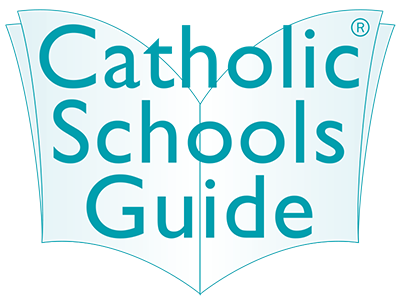News and Media

The key protective factor against stress: Four Fundamental Pillars of Resilience by Donna Smith.
Teacher attrition has long been major concern not only for Australia but also other economically developed countries. In fact, in Australia, almost half of the beginning teachers employed resign after just five years of practice (Hong, 2012). This is problematic as it has compounding e!ects. Firstly, the psychological pain and su!ering endured by the individual teacher (Dorman, 2013) can compromise their mental health; secondly, there is a negative impact on student learning outcomes (Arnup & Bowles, 2016); and lastly, the loss of highly trained professionals creates significant challenges in recruitment and replacement (Howard & Johnson, 2004).
In Australia, there are almost 270,000 teachers and 4 million students in 9,500 schools (ABS, 2021). This is almost 1 in 6 people with a direct interest in Australian school life. Education is everybody’s business and is too large to be ignored or not considered. It is, therefore, vital we preserve and get better at retaining teachers as they have a far-reaching influence on shaping our nation (He!ernan, 2019) and are drivers for student success (Hattie, 2009).
The high attrition rate among beginning teachers is not only important in terms of addressing a shortage of teachers (Kim, 2019), there is a real drive to create more sustainable practices so teachers can operate from a positive mindset. Mental wellbeing of teachers is at the forefront of teacher attrition with research making it apparent that teacher resilience and burnout contribute to teachers leaving the profession.
Because burnout is caused by prolonged periods of stress it is then only natural that steps are taken in managing stress to keep it at a sustainable level. Susan Bruce, associate professor at Northeast Ohio Medical University, says that it is better and easier to prevent burnout than to cure or resolve it. A key to this lies in resilience building. According to Susan Beltman, Associate Professor for the School of Education at Curtin University, resilience defines an individual’s capacity to continue, adapt and thrive despite experiencing adversities, such as unexpected changes, critical life events and job stress. Importantly, rigorous evidence-based research (Hong, 2012; Beltman et al., 2011; Arnup & Bowles, 2016; Howard & Johnson, 2012) has outlined four elements underpinning resilience known as the ‘four fundamental pillars’: Confidence, de-personalisation from unpleasant events, pride and ownership over accomplishment, and strong connections with others.
Confidence: Belief in one’s abilities is the cornerstone of resilience. Research demonstrates that confident educators are less likely to manifest burnout curbing their intention to leave the classroom (Hong, 2012; Howard & Johnson, 2012). Furthermore, being confident and having a strong self-belief in one’s abilities not only builds resilience it generates fulfilment, motivation and a sense of joy.
De-personalisation: At times, teachers may feel responsible for events that are out of their control. Resilient individuals understand the importance of creating strong and healthy personal and professional boundaries enabling them to de-personalise from adversity and unpleasant events and this most certainly enhances teacher resilience (Howard & Johnson, 2012).
Pride and ownership: We need to celebrate our wins. It is easy to fall into the trap of playing o! small accomplishments and not recognising the e!orts put forth in achieving such wins. Resilient people are proud, celebrate their accomplishments and take ownership of all goals achieved, no matter how trivial, which fosters high resilience.
Strong connections: Resilience thrives on healthy and strong networks. These networks need to be fostered in professional and personal life. Healthy relationships with family and friends can influence an individual’s professional career. Therefore, a 360-degree approach to healthy relationships is paramount to building and maintaining resilience (Bruce, 2009).
It’s important to know that resilience is not static, it can wax and wane depending on the circumstances. To build and maintain resilience through adverse times individuals need to be kind to themselves, practice, and persevere. Resilience can grow over time and it is now, especially during these uncertain times, we need to strengthen our resilience more than ever. The four fundamental pillars o!er a great starting point to build resilience not only to survive through adversity but to thrive.
References Australian Bureau of Statistics [ABS]. (2021). Schools Australia. https://www.abs.gov.au Beltman, S., Mansfield, C., & Price, A. (2011). Thriving not just surviving: A review of research on teacher resilience. Educational research review, 6(3). 185-207. Bruce, S. (2009). Recognizing stress and avoiding burnout. Science direct, 1(1). 57-64. Hattie, J. (2009). Visible learning: A synthesis of 800+ meta-analyses on achievement. Routledge. He!ernan, A., Longmuir, F., Bright, D., & Kim, M. (2019). Perceptions of teachers and teaching in Australia. Monash University. Hong, J. (2012). Why do some beginning teachers leave the school, and others stay? Understanding teacher resilience through psychological lenses. Teachers and teaching, 18(4). 417-440. Howard, S., & Johnson, B. (2004). Resilient teachers: resisting stress and burnout. Social Psychology of education, 7. 399-420. Kim, L. E., Jörg, V., & Klassen, R. M. (2019). A meta-analysis of the e!ects of teacher personality on teacher e!ectiveness and burnout. Education psychology Review, 31. 163-195. Mansfield, C., Beltman, S., Price, A., & McConney, A. (2012). “Don’t sweat the small stu!:” Understanding teacher resilience at the chalkface. Teaching and Teacher Education, 28(3). 357-367.

